More than a decade ago, Nepal’s renowned conceptual artist, Ashmina Ranjit, performed “Happening/An Installation: Nepal’s present situation, 2004” on the streets of Kathmandu. The performance was intended to dramatize the nation’s suffering during a particularly bleak time in Nepal’s history—a decade-long Maoist civil war and a governmental ban that prohibited large gatherings of people on the street. Ashmina told me, during one of our many conversations, that the performance aimed to “wake the people of Kathmandu up” to the violence occurring in villages beyond the capital city’s borders. Black-clad performers walked solemnly and silently in pairs. One person would suddenly fall to the ground, feigning death, while the other drew his/her outline on the street in chalk. The happening was not only a visual spectacle, but it was also a sonic act. Many performers carried handheld FM radio sets, simultaneously issuing a soundtrack of several people crying that was being broadcast across all FM stations and the state-owned Radio Nepal for a full hour, from 5:00 to 6:00 p.m. The sound and silence that emanated across the streets participates in and constitutes what I call a democratic soundscape. At once producing and reflecting upon the media of democratic protest—ranging from radio infrastructure to collective processions—Ashmina’s performance urges us to consider the importance of sound in cultivating political subjectivity.
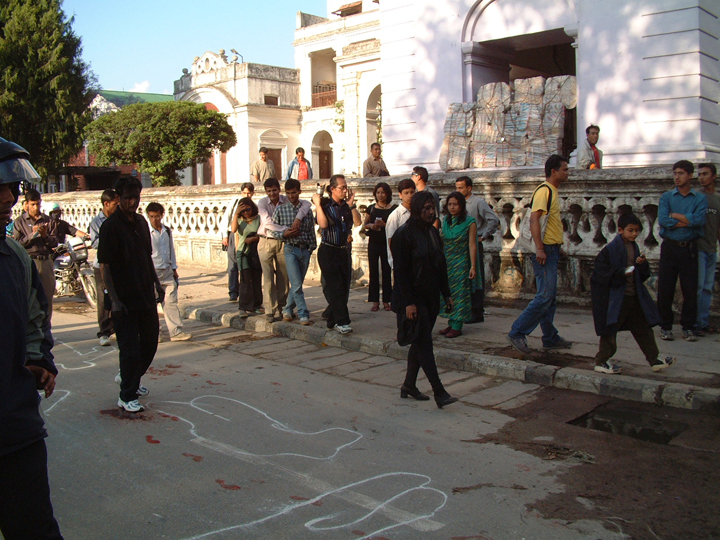
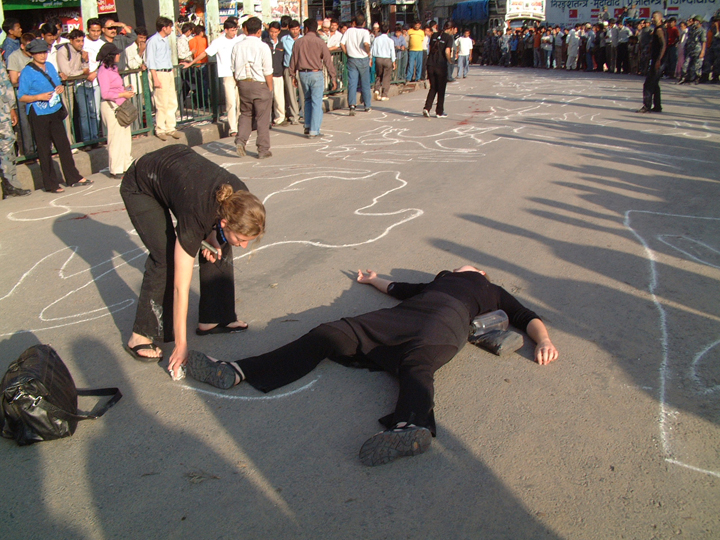
This democratic soundscape was marked by two sonic motifs: silence and wailing, neither of which are sounds typically associated with “democracy.” In its popular understanding, democracy is identified with various forms of voicing: from political speeches to the shouts of public protest; from filibusters in the halls of the US Congress to heated debates in cafés, salons, and newspapers around the world. More broadly, such voicing is seen as rhetorically constituting the democratic subject itself, through metaphors such as finding voice, raising voice, and having one’s voice heard.1 These metaphors are usually disembodied, rarely invoked with any reference to the materiality or texture of embodied voices.2 Furthermore, such metaphors of political voice almost always refer to discursive speech or analytic or reasoned discourse. They rarely conjure other forms for political utterance, sound, or even noise—voices shouting, collective chanting, the production of noise for political effect, or, significantly, the active performance of silence. By reviewing Ashmina’s “Happening” and considering it as a democratic soundscape, I ask a simple question: What does democracy sound like?
I was initially drawn to write about Ashmina’s performance after being struck by the fact that she had arranged for the broadcast of wailing across all FM radio stations in the capital city for a full hour. Knowing from experience how pervasive the polyphony of radio is in Kathmandu and how its distribution of sounds, voices, and noises constitutes much of the urban landscape, I was drawn to this performance that transformed the usual diversity of sound into a singularity of broadcast wailing across all stations. But when I first met Ashmina, a year or so after this particular performance (she was an MFA student at Columbia University at the time), she began by telling me that “Happening” was notable for its silence.
Ashmina’s performance, like all democratic soundscapes, resonates with the sounds of the place and time in which it occurs and transforms them. The soundscape of Kathmandu has indeed been powerfully marked by disruptive silences. The sonic space the performance created evoked the quiet of the streets during the bandhs or general strikes, prevalent especially at the time, that would shut down the city (and at times the entire nation) in protest. On such days, in contrast to the noise of urban traffic, the streets are largely empty; people who do go out are generally walking or bicycling; and it is the lack of typical daily sounds (not quite silence) that make the protest palpable—along with the threat of violence that accompanies attempts to break the silence and commute or transact in contravention of the strike.3 This tension, and the significance of these partial silences, were felt even by those who did not know what the bandhs were directed against in the complex, competitive, and diverse political landscape of contemporary Nepal.
At the same time, “Happening” was enacted at the site of the most violent and regular protests taking place at that time—the famed “Democracy Wall” of Ratna Park that was built to commemorate the 1990 People’s Movement and the reestablishment of a multiparty democracy. It had been one of many sites of common julus or processions protesting the royal regime, the demise of the democratic process, and the ongoing civil war between the Maoists and the royal army. At the time of the performance, there was a ban on public gathering at certain sites across the city; due to its symbolic significance and central location, Democracy Wall was one such place. Despite the ban, one could daily hear the sounds of shouting protesters near the Wall, actions that typically concluded with the police rounding up the demonstrators into blue police vans and carting them off to jail.4 In staging a silent procession of actors, dressed in black and directed to not say a word, the noise of regular protests at Democracy Wall was thrown into relief. Part of the power of “Happening” came from the fact that it was staged during a crisis in democratic participation, a crisis that Ashmina marked by painting a “No Entry” symbol on the street where the performance took place.
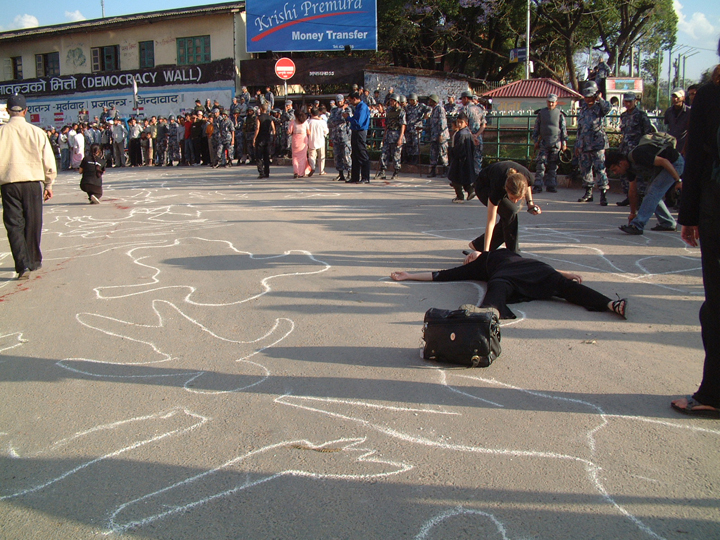
Countless other protests around the world have captivated their audience through the public performance of silence: the 1917 silent parade of eight thousand to ten thousand black Americans on Manhattan’s Fifth Avenue that followed a lynching; the 2013 “standing man” protest in Istanbul’s Gezi Park that spread to cities around the world; the silent Black Lives Matters protests made across the United States; the Women in Black silent vigils against war and injustice made across the world. While each instance of silence has its own history, context, and specific intentions, it is clear that silence has a powerful effect in emphasizing social solidarity, solemnity, mourning, and violence.5 Silence draws attention to a break in communication between authorities and citizens or a problem with the concept of the public or politics itself. In these demonstrations of palpable silence, people dramatize the problems of voicing without uttering a word. It is an ironic commentary on and resistance to censorship in which their performance is an inverted acting out of what they seek.
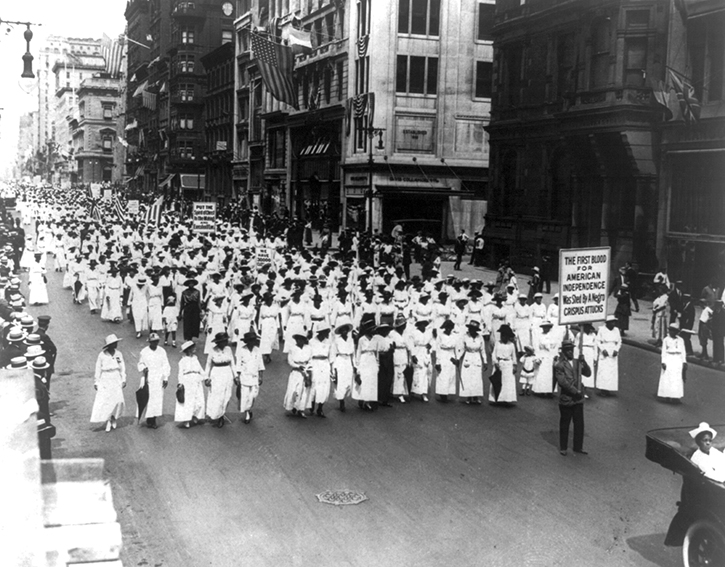
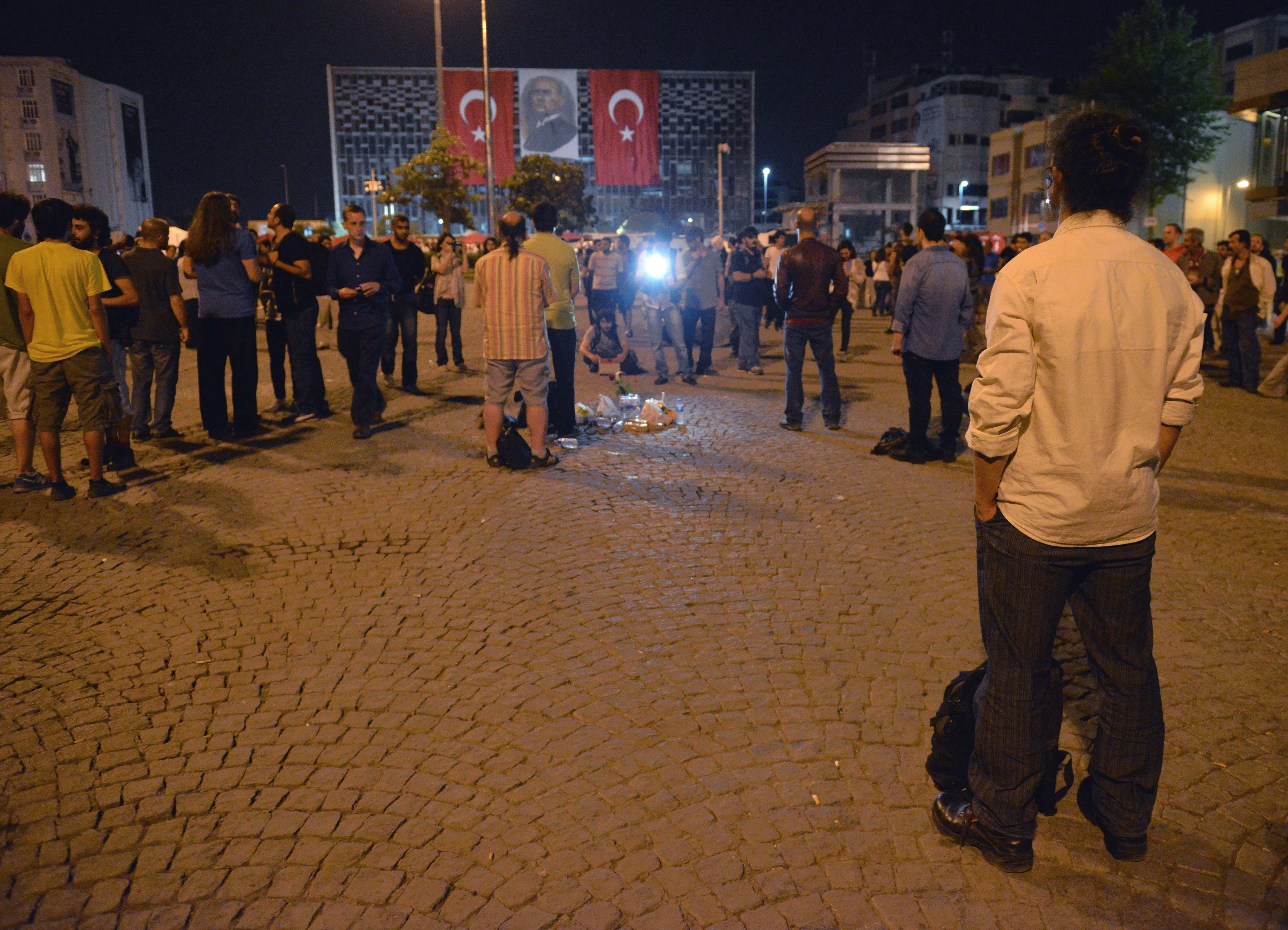
Silence aims, in these cases, to inspire talk, and this talk is part of the effectiveness of silence in cultivating political subjects. The “biopolitics of silence,” as Ana María Ochoa calls it, involves a “dialectic between recognition and negation.”6 On the one hand, the ability of modern subjects to engage in silent concentration leads to rational understanding, and on the other, to engage in a “silencing of irrational or noisy forms of listening” simultaneously elevates some political subjects and denigrates others as “not yet” political.7 In the case of Ashmina’s performance, pairing silence with broadcast sounds of crying becomes a means of reflective engagement with the contemporary political context that exceeds rational understanding.
The FM radio sets that the performers used to juxtapose their silence with wailing were either carried in the performers’ pockets, positioned in windows of adjacent houses, or amplified by a megaphone carried by a member of the crew. Ashmina compiled her soundtrack using the sounds compiled in a documentary film about the Nepal Army during the war, which she supplemented with recordings of herself and actors she had hired. Parts of this soundtrack had been used in an earlier performance piece she had completed a year before, for which she had received widespread media attention. “The sound of crying is most effective,” Ashmina told me. “It shakes you.” Indeed, the recorded cries had become part of her own artistic signature, whose preexisting public awareness was a major reason why the privately owned FM stations in the city and the state Radio Nepal were willing to hand over their broadcasts to this performance for the hour.
The sound of crying is the sound of affect writ large. It incites long-standing questions about the relationships between thought, feeling, and public action. As a performed genre in Nepal, crying is associated primarily with women and is a conventional aspect of funerals and weddings. Notably, however, such plaints are not usually a public form addressed to strangers, let alone a mass broadcast. Most of the crying on Ashmina’s soundtrack was performed by women (including herself) whose only clear enunciation was an occasional reference to children and hence maternal function. These “mother’s sobs,” in turn, came to be referred to later as a sonic symbol of the nation at large. The nation is weeping, many said, articulating long-standing patriarchal tropes of nationalism, womanhood, suffering, and solidarity. Recorded and transmitted through the radio, the sounds of mourning were transposed and remediated from their usual familial setting to a public, national one, much in the way Benedict Anderson describes familial intimacy as being central to national imaginaries.8 The anonymity of crying became a means to create the sense and sensibility of public cohesion. The effect was to dissolve any discernible politicized identities (of class, region, ethnicity, caste, religion, etc.) that may be revealed in speech (through accent, word choice, tone of voice) while at the same time still allowing listeners to hear gender in the cries of mothers. The stripping away of specific social, politicized subject categories could be read as an anti-political or apolitical move within the grammar of the piece. The gendered nature of the sobs effectively rendered the voices more “natural,” making them appear to transcend political divides and represent the national family or “motherland,” a term widely embraced across South Asia. Crying presented a secular, national, and, despite (or perhaps because of) Ashmina’s gendering, a more human subject; as some journalists suggested, in a variety of ways, it sounded like Nepal was crying.9
Athena Athansiou discusses how the Women in Black silent vigils that protest the Israeli occupation are sometimes interrupted by women’s wails of grief and even occasional screams. As Athansiou argues, the movement between silence and crying suggests the way these women “inhabit language in the realms of its most intense and unpronounceable discontinuities (i.e., silence and scream).”10 Ashmina’s “Happening” echoes this feminist politics, one that performs the inevitable experience of language—“language being at a loss”—and that captivates people through audible expressions of affect that lie at the edge of discourse.11
Democratic protests around the world deploy other forms of noise to similarly convey their affective discontent. The use of pots, pans, and metal plates to create the noise of protest, for example, is a global phenomenon used in Nepal, Argentina, Quebec, and Turkey. In parts of South America this clanking is deployed as cacerolazo (casserole) protests, called manifs casseroles in Quebec. Jonathan Sterne and Natalie Zemon Davis link the percussive banging on pots and pans in the 2012 Quebec protests against Bill 78 that banned public assembly and certain rights of protest to the charivari protests in early modern and modern France, when noisy demonstrations, typically performed by disguised youth, “call[ed] attention to a breach of community standards in the village or neighborhood.”12 In a kind of reversal of Elaine Scarry’s discussion of everyday items becoming weapons of torture, here the democratic soundscape turns everyday, domestic items into the weapons of protest, effectively bringing the home into the public.13 In the 2013 Gezi Park protests in Istanbul, especially throughout the month of June, the nightly call to bang on pots and metal plates was made sometime after dark and generated participation through noise; these sounds were infectious.14 Like the recorded cries, the noise of banging plates transmits little political content other than an overall affective tone—though it registers an orchestrated demonstration of anger and discontent rather than the sorrow and pain of cries. The content of protest remains obscured in the din of banging that echoes across the city, signifying through noise a breakdown in communication between ruler and ruled.
As a concept, the democratic soundscape has a checkered past among scholars of sound. The term soundscape was made popular by the Canadian composer and environmentalist Murray Schafer, whose analysis lays out a clear division between “sound” and “noise.”15 Here, democratic soundscapes are understood to move between performed silence, voices chanting, yelling, discussing, conducting filibusters, and the deliberate or accidental noise of mass gatherings. Schafer’s writings on and recordings of urban soundscapes in the 1970s were attempts to catalog an entire acoustic environment as an object of reflection, much like landscape. Given his concern for noise pollution, his idea of soundscape contained a thinly veiled environmental romanticism about the loss of the sounds of nature in modernity due to industrial and urban noise.16 Ironically, the very concept of soundscape Schafer proposes emerges out of the development of modern recording technologies that enable sounds to be stored and preserved.17 While some scholars embrace Schafer’s concept of the soundscape to argue for more rigorous attention to the relationships between sound, place, and context, others vigorously argue against the idea of soundscape altogether, claiming that it fails to treat sound as “a phenomenon of experience,” or that its history “is shadowed by an acoustemology of space as given and listener as both apart from the world and immersed in it.”18 In this critical view, soundscape is problematic to the degree that it turns our attention away from the active processes of mediation that inevitably make any sound possible and upon which any recording of a “soundscape” in fact depends.
My use of “democratic soundscape” follows the definition of soundscape that Emily Thompson, drawing on Alain Corbain, establishes in her book, The Soundscape of Modernity. A soundscape, Thompson writes, is “simultaneously a physical environment and a way of perceiving that environment; it is both a world and a culture constructed to make sense of that world.”19 The concept of a democratic soundscape follows this departure from Schafer, and asks us to think about how the material sounds of democracy are produced through specific media, ranging from voices to performed silence or noise to mass media. Furthermore, democratic soundscapes may unsettle normative relationships between passionate utterance and articulate speech, human discourse and inanimate noise. Hearing them in new ways may encourage us to rethink how they enhance, alter, or undermine the meaning of being participating citizens and subjects in a democracy.
My rendition of democratic soundscapes in Nepal, based on my own and others’ recordings, depict various media—chanting voices, whistles, honking, banging on plates and pots, and recorded wailing—used to signify democratic practice, all of which draw upon and repurpose incidental sounds of the city within which such actions take place. Rather than taking us away from considering media and the ubiquity of mediation, democratic soundscapes help us consider the full range of sonic media and mediation involved in any performance of democracy.
What does it mean to write about democratic soundscapes in the era of Trump? Certainly there are many critical approaches to understanding the relationship between emotional and aesthetic expression within mass politics and modes of authoritarian power. This essay offers new ways of understanding such relationships. Walter Benjamin famously argued that “[f]ascism sees its salvation in giving these masses not their right, but instead a chance to express themselves. Fascism seeks to give them an expression while preserving property.”20 There is no doubt that considering democratic soundscapes turns our attention toward the affective and embodied nature of political performance, aspects of democracy that are often disavowed or aggressively disparaged in discussions of a rational public sphere and the political ethics of communication. It is perhaps indicative of the complicated way forward for today’s critic that the idea of democratic soundscape suggested here does not presume an opposition between reason and affect. Rather, it focuses our attention on the inseparable links between the rational and the affective, the ideational and the material. It turns our attention to those sounds inherent in participatory democracy that depend not upon a single speaker but upon collectivities—often assembled en masse—to make any message heard within the polyphony of perspectives that can constitute ongoing, collaborative deliberation. Such moments are popularly embodied in the “human mic” used at recent protests, like the occupy movements or many anti-Trump protests after the election, when a single person’s speech or chant are spoken in short segments and then repeated by the crowd so that the words can be heard far from the source. The human mic works, then, through the nonmechanical amplification of voice, collective resounding, and in so doing inverts, ironically, familiar modes of electronic mediation associated with modernity and mass experience.21 The human or “people’s mic” emphasizes a collective voice that, as Homay King notes, “shifts away from sovereign, solitary personhood,” in part through a poetics in which the human appropriates the mechanical.22 By “extending the communality of the movement through embodiment,” the human mic enacts the very thing that it seeks to represent or demand.23 “This is what democracy looks like” writes King, echoing the common chant at protests throughout the United States.24 Or we might say, this is what democracy sounds like.
-
In a much longer article titled “Sounds of Democracy,” I describe this performance more fully in comparison with another political protest in Nepal called “Occupy Baluwater” to argue that they both “provincialize” these classic notions of voice. ↩
-
See, for example, Laura Kunreuther, Voicing Subjects: Public Intimacy and Mediation in Kathmandu (Berkeley: University of California Press, 2014); Amanda Weidman, “Voice and Anthropology,” Annual Review of Anthropology 43 (2014): 37–51; Daniel Fisher, The Voice and Its Doubles (Durham, NC: Duke University Press, 2016). ↩
-
While bandhs were particularly prevalent at this time, they still occur during recent moments of political unrest; they are part of the usual repertoire of political protest in Nepal. For an insightful analysis of such protests during this period see Genevieve Lakier, The Spectacle of Power: Coercive Protest and the Problem of Democracy in Nepal (PhD Diss., University of Chicago, 2014). ↩
-
See Amanda Snellinger, Transfiguration of the Political (PhD Diss., Cornell University, 2010). ↩
-
For work on the intersection between silence and noise in protests following the 2011 earthquake in Japan, see Marié Abe “Sounding Against Nuclear Power in Post–3.11 Japan: Resonances of Silence and Chindon-ya,” Journal of Ethnomusicology 60 (2016): 233–262; David Novak and Matt Sakakeeny, Keywords in Sound (Durham, NC: Duke University Press, 2015). ↩
-
Ana Maria Ochoa Gautier, Aurality: Listening and Knowledge in Nineteenth-Century Colombia (Durham, NC: Duke University Press, 2014), 186. ↩
-
Ochoa, Aurality, 186. ↩
-
See Benedict Anderson, Imagined Communities: Reflections on the Origins and Spread of Nationalism (New York: Verso, 1991). ↩
-
See Saurava Pradhan, “Ashmina ‘Raises Her Voice’ Against Present Madness,” The Kathmandu Post, May 2, 2004; and Phulman Bal, “Sadakma kalakarka ragatme paila (Artist’s Blood-Stained Footsteps on the Road),” Kantipur, May 2, 2004. ↩
-
Athena Athanasiou, “Reflections on the Politics of Mourning: Feminist Ethics and Politics in the Age of Empire,” Historian 5 (May 2012): 47. ↩
-
Athanasiou, “Reflections on the Politics of Mourning,” 47. ↩
-
Jonathan Sterne and Natalie Zemon Davis, “Quebec’s Manifs Casseroles Are a Call for Order,” the Globe and Mail, May 31, 2012 link. ↩
-
See Elaine Scarry, Body in Pain: The Making and Unmaking of the World (Oxford: Oxford University Press, 1985). ↩
-
See Zeynep Gürsel, “#potsandpans: Rethinking Social Media in Istanbul During Occupy Gezi,” Anthropology Now, vol. 5, no. 3 (December 2013): 67–73. ↩
-
See Murray Schafer, Tuning of the World (New York: Knopf, 1977). ↩
-
See Emily Thompson, The Soundscape of Modernity: Architectural Acoustics and the Culture of Listening in America, 1900–1933 (Cambridge, MA: MIT Press, 2002); Sterne and Davis, “Quebec’s Manifs Casseroles Are a Call for Order;” Stephan Helmreich, “Listening Against Soundscapes,” Anthropological News, vol. 51, no. 9 (December 2010). ↩
-
Samuels et al., “Soundscapes: Towards a Sounded Anthropology,” Annual Review of Anthropology 39 (October 2010): 331. ↩
-
On soundscape as a useful way to discuss sound, place, and context, see Samuels et al., “Soundscapes: Towards a Sounded Anthropology”; on two different arguments against soundscape see Tim Ingold, “Four Objections to the Concept of Soundscape,” in Being Alive: Essays on Movement, Knowledge, and Description (New York: Routledge, 2011); and Helmreich, “Listening Against Soundscapes.” ↩
-
Thompson, The Soundscape of Modernity, 1. ↩
-
Walter Benjamin, “The Work of Art in the Age of Mechanical Reproduction,” in Illuminations, trans. Harry Zohn, ed. Hannah Arendt (London: Fontana, 1969), 241. ↩
-
Katherine Kelp-Stebbins and Allison M. Schifani, “The Medium Is the Masses: Embodied Amplification, Urban Occupation,” Media Fields Journal 9 (2015): 1–14. ↩
-
Homay King, “Antiphon: Notes on the People’s Microphone,” Journal of Popular Music Studies, vol. 24, no.2 (June 2012): 239. ↩
-
Kelp-Stebbins and Schifani, “The Medium Is the Masses,” 7. ↩
-
King, “Antiphon,” 239. ↩
Laura Kunreuther is an associate professor and director of anthropology at Bard College. Her book Voicing Subjects: Public Intimacy and Mediation in Kathmandu (University of California Press, 2014), traces the relationship between public speech and personal interiority during a moment of democratization in Nepal. Kunreuther is currently engaged in two projects that explore sound, listening, and political subjectivity. The first centers around the use of sound for political and artistic protest; the second on the role of field interpreters deployed in U.N. field missions.

